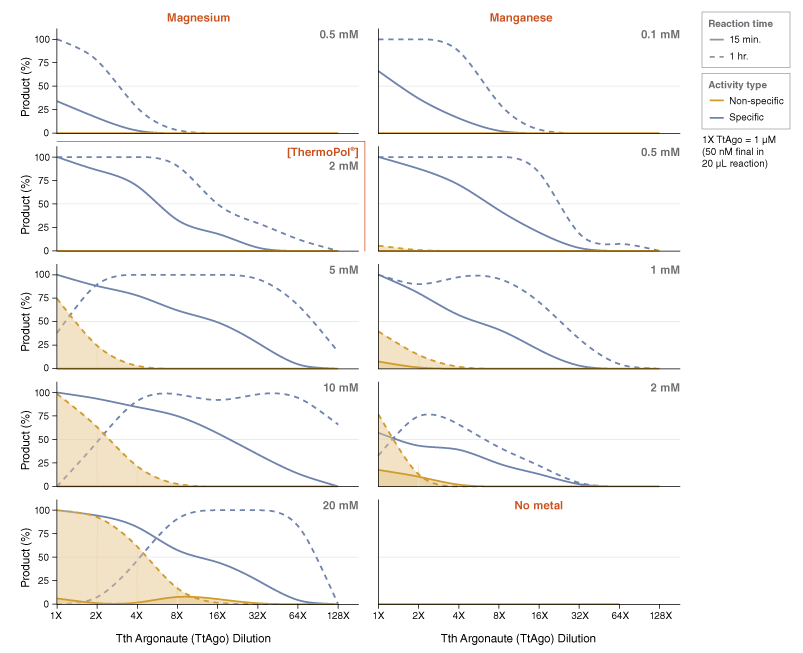GUIDElines for optimization of Tth Argonaute (TtAgo) reactions
NEB scientists have screened a large collection of single-stranded DNA guides targeting randomized single- and double-stranded DNA sequences in order to provide to following useful tips to help with designing guides for your own unique applications. The underlying mechanisms of in situ prokaryotic argonaute guide production are an area of ongoing research, and there are a variety of factors that can affect the activity of guide/argonaute combinations that have yet to be elucidated. As such, the following recommendations represent a “best foot forward” approach for guide design, however they do not guarantee that a guide designed in accordance will be functional.
GUIDEline #1: Begin guides for TtAgo with a thymidine

Percent product is measured relative to substrate remaining after a 30 minute reaction in ThermoPol® Reaction Buffer (NEB #B9004) at 75°C where 17-nucleotide guide oligo is kept in 5X molar excess over TtAgo and substrate. Bar plots represent the population median with error bars corresponding to the upper and lower quartiles of the population of several reactions utilizing randomized guides and substrates.
GUIDEline #2: Avoid adenosine in the twelfth position of guides for TtAgo

Percent product is measured relative to substrate remaining after a 30 minute reaction in ThermoPol® Reaction Buffer (NEB #B9004) at 75°C where 17-nucleotide guide oligo is kept in 5X molar excess over TtAgo and substrate. Bar plots represent the population median with error bars corresponding to the upper and lower quartiles of the population of several reactions utilizing randomized guides and substrates.
GUIDEline #3: Select an optimal target sequence GC content for TtAgo

Percent product is measured relative to substrate remaining after a 30 minute reaction in ThermoPol® Reaction Buffer (NEB #B9004) at 75°C where 17-nucleotide guide oligo is kept in 5X molar excess over TtAgo and substrate. Bar plots represent the population median with error bars corresponding to the upper and lower quartiles of the population of several reactions utilizing randomized guides and substrates.
GUIDEline #4: ET SSB may aid in cutting higher GC content substrates under specific conditions

Percent product is measured relative to substrate remaining after a 30 minute reaction in ThermoPol® Reaction Buffer (NEB #B9004) at 75°C where 17-nucleotide guide oligo is kept in 5X molar excess over TtAgo and substrate. Bar plots represent the population median with error bars corresponding to the upper and lower quartiles of the population of several reactions utilizing randomized guides and substrates.
GUIDEline #5: ThermoPol® Reaction Buffer with 2mM magnesium(II) is optimal for most reactions

Percent product is measured relative to substrate remaining after a 15 minute or 1 hour reaction at 80°C where 17-nucleotide guide oligo is kept in 5X molar excess (at 1X enzyme) over TtAgo and substrate.
General Usage Notes:

Percent product is measured relative to substrate remaining after a 15 minute reaction at 80°C where 17-nucleotide guide oligo is kept in 5X molar excess over TtAgo and substrate.



